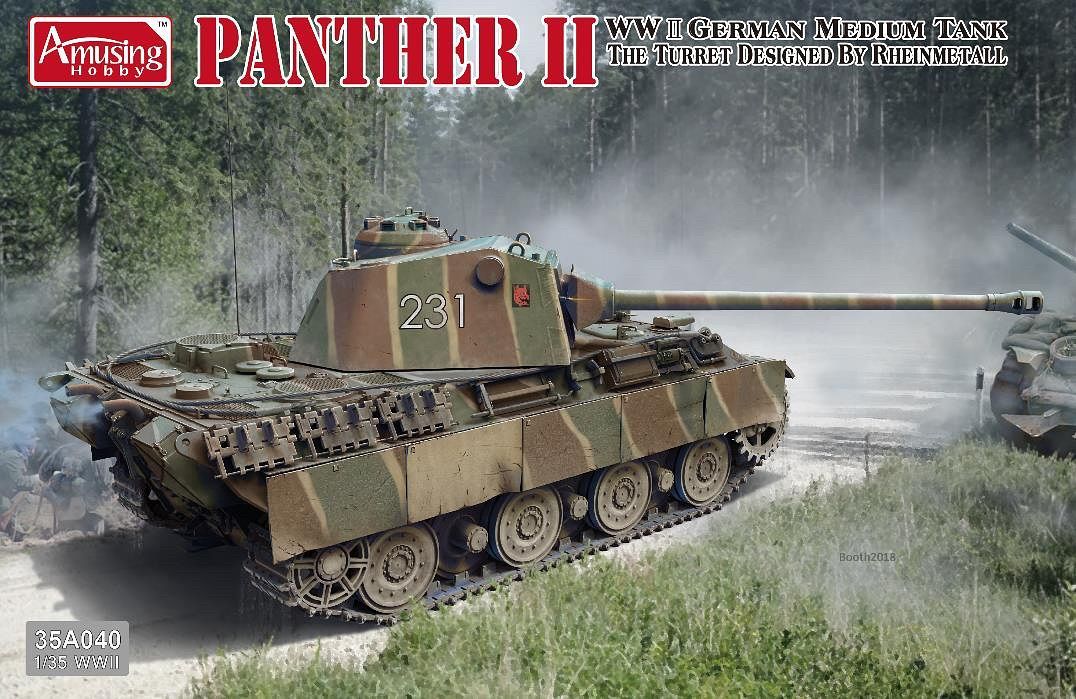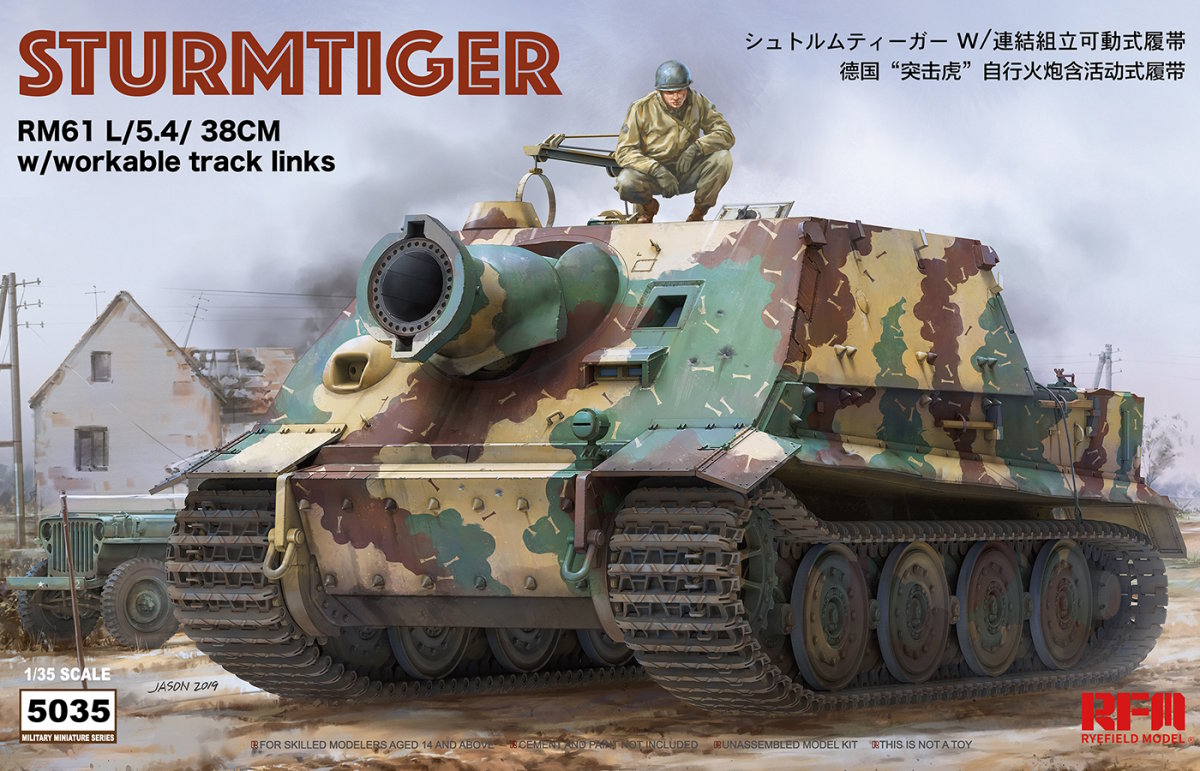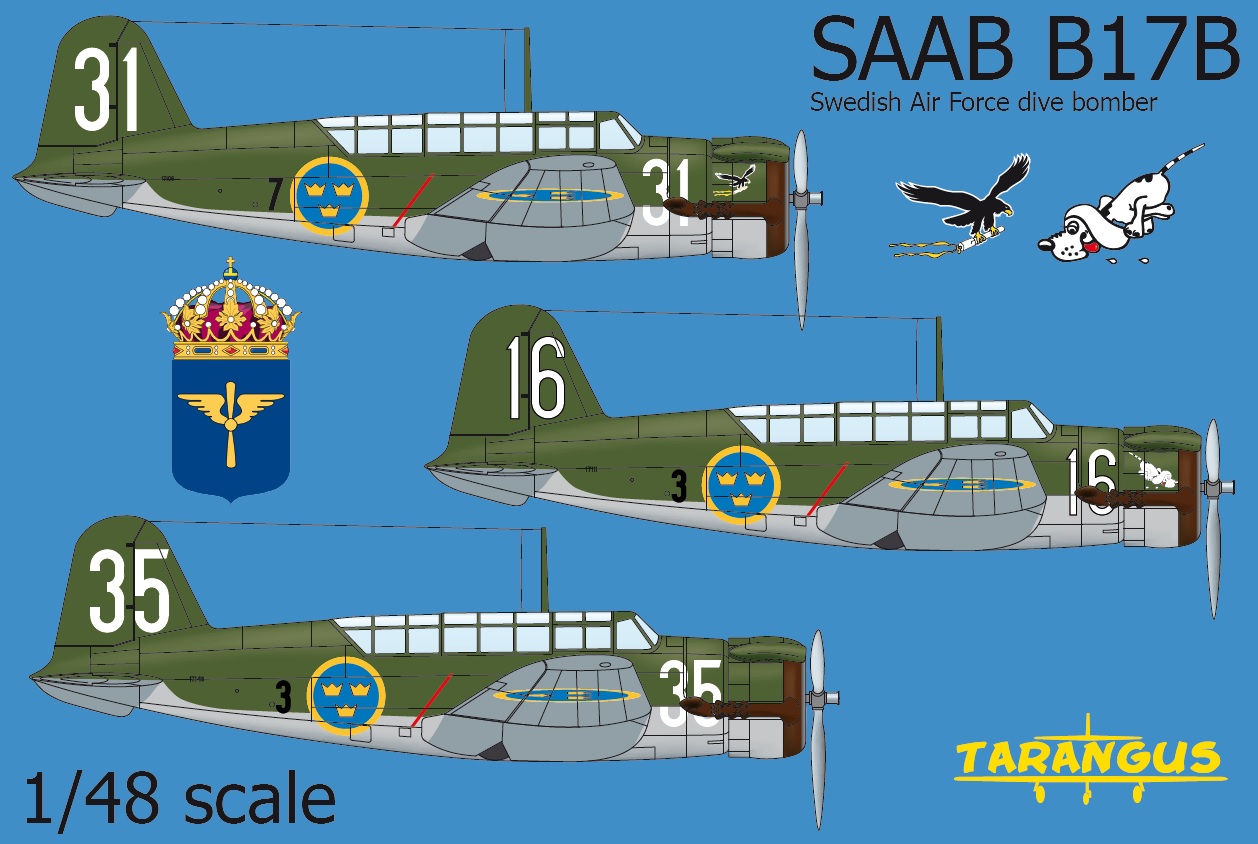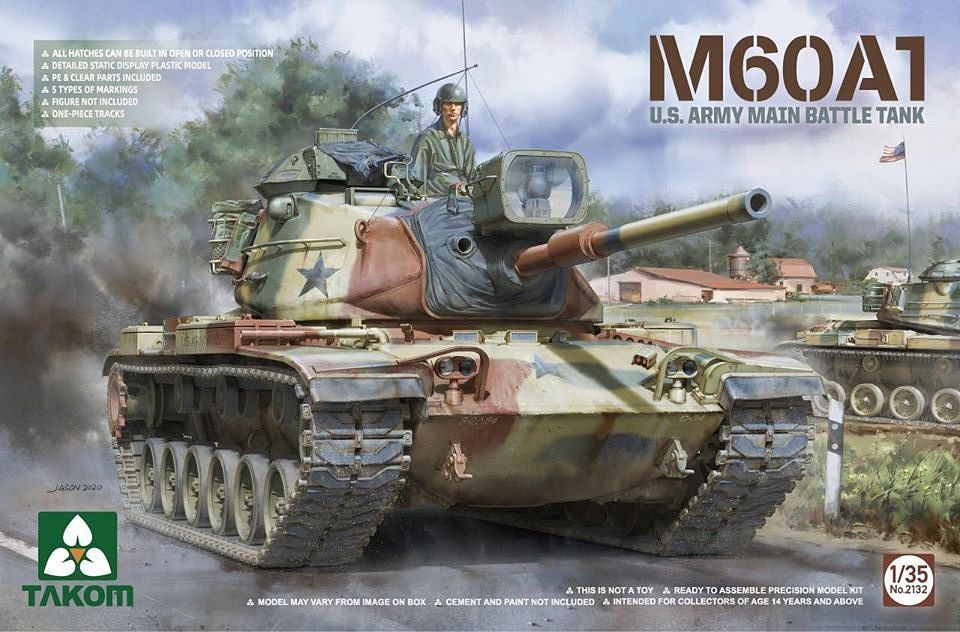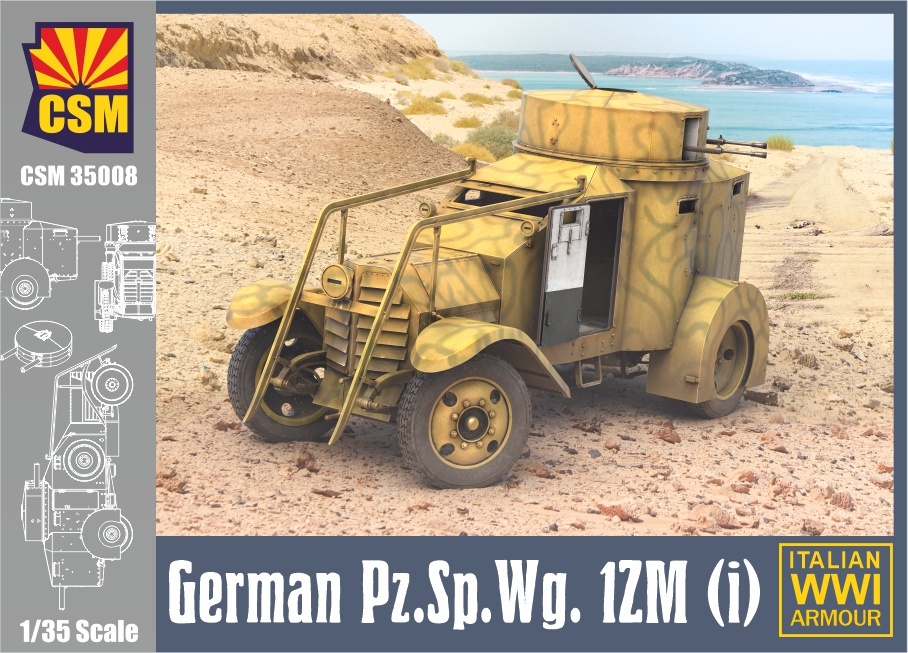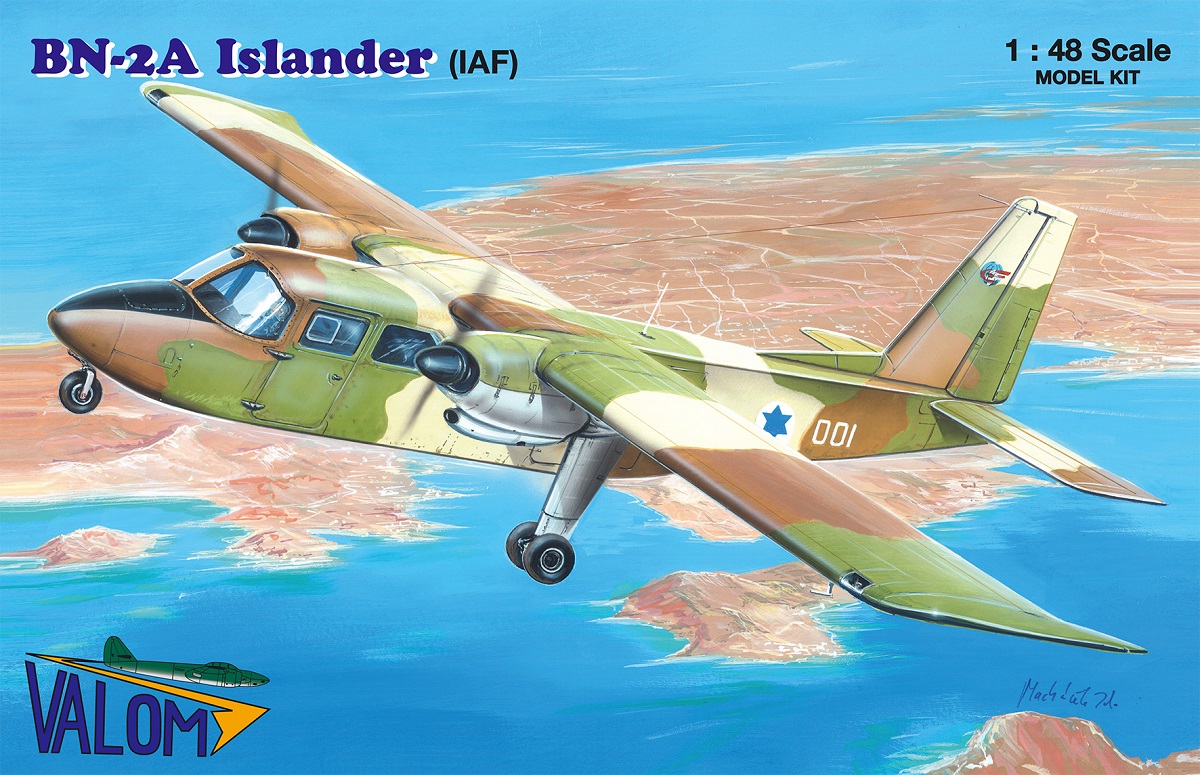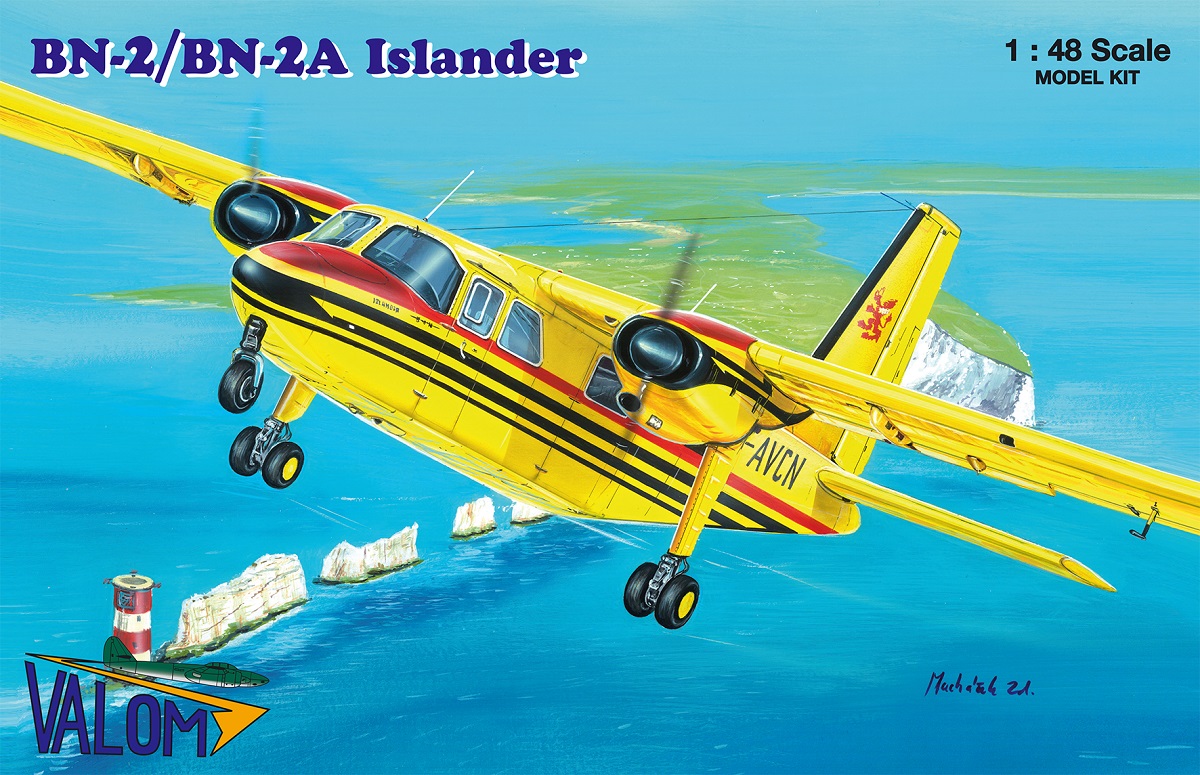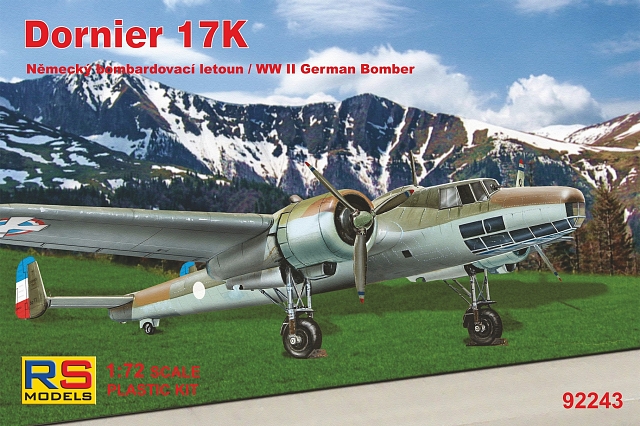Hračky
Celkem 300 produktů
1/35 WWII MEDIUM TANK PANTHER II RHEINMETALL TURRET. This is an injection-plastic military vehicle model kit. Another interesting late war German Paper Panther on the way from Amusing Hobby! The Panther II, as the name implies, was the follow up design to the German Panther tank, but it never progressed beyond prototypes and designs. The Rheinmetall company finished the Panther II's turret design in March 1944. It was smaller than conventional turrets and featured a slanted upper surface to make up for the stereo side equipment. Be sure to add this unique kit to your armor lineup!
1/35 Bergepanzer Tiger I. This is an injection-plastic military vehicle model kit. Rye Field Model presents a 1/35 scale kit of the U.S. main battle tank: M1A2 SEP Abrams TUSK! This two-in-one kit can be built with either the TUSK I or TUSK II specifications, and features a full interior for plenty of detail to enjoy inside and out. It features a link and length type crawler belt, and comes with 830 parts, 85 photo-etched parts, and decals for multiple marking options. Grab it today! [Mold Color]: Tan [Includes]: Photo-etched parts, decals
1/35 Sturmtiger Rm61 L/5.4/38cm W/Workable Track Links. This is an injection-plastic military vehicle model kit. The Sturmtiger was a self-propelled artillery developed by Germany in World War II. This tank remodeled the chassis of the Tiger I, and it was equipped with a 38cm rocket mortar originally developed for the German Navy. Only 18 of this tank were produced. Interior parts are limited to parts inside the battle room; parts such as the engine, radiator fan, and transmission are not included. The track links are movable, and photo-etched parts are included, as are decals for 3 markings versions. [Includes]: Photo-etched parts, decals for 3 versions
1/35 Bergepanzer Tiger I. This is an injection-plastic military vehicle model kit. Rye Field Model presents a 1/35 scale kit of the U.S. main battle tank: M1A2 SEP Abrams TUSK! This two-in-one kit can be built with either the TUSK I or TUSK II specifications, and features a full interior for plenty of detail to enjoy inside and out. It features a link and length type crawler belt, and comes with 830 parts, 85 photo-etched parts, and decals for multiple marking options. Grab it today! [Mold Color]: Tan [Includes]: Photo-etched parts, decals
1/35 Sturmtiger Rm61 L/5.4/38cm W/Workable Track Links. This is an injection-plastic military vehicle model kit. The Sturmtiger was a self-propelled artillery developed by Germany in World War II. This tank remodeled the chassis of the Tiger I, and it was equipped with a 38cm rocket mortar originally developed for the German Navy. Only 18 of this tank were produced. Interior parts are limited to parts inside the battle room; parts such as the engine, radiator fan, and transmission are not included. The track links are movable, and photo-etched parts are included, as are decals for 3 markings versions. [Includes]: Photo-etched parts, decals for 3 versions
1/48 SAAB B17B - The first SAAB aircraft. The first SAAB designed and built aircraft was initially an ASJA (SAAB’s predecessor) project called the L-10, a reconnaissance aircraft. When ASJA was merged with SAAB, the airplane was named SAAB 17. It was now also intended as a dive bomber. As the European continent was thrown into war, the lack of engines forced three different versions of the SAAB 17 to be developed; the 17A with Pratt & Whitney Twin Wasp, the 17B with Bristol Mercury XXIV and the 17C with Piaggio P. XIbis R.C.40D. The first prototype flew on May 18 1940 and two years later deliveries commenced.
1/48 SAAB B17B - The first SAAB aircraft. The first SAAB designed and built aircraft was initially an ASJA (SAAB’s predecessor) project called the L-10, a reconnaissance aircraft. When ASJA was merged with SAAB, the airplane was named SAAB 17. It was now also intended as a dive bomber. As the European continent was thrown into war, the lack of engines forced three different versions of the SAAB 17 to be developed; the 17A with Pratt & Whitney Twin Wasp, the 17B with Bristol Mercury XXIV and the 17C with Piaggio P. XIbis R.C.40D. The first prototype flew on May 18 1940 and two years later deliveries commenced.
1/35 M60A1 Patton U.S. Army Main Battle Tank. The M60 is a main battle tank developed by the United States as a successor to the M46, M47, and M48 in order to combat the new T-54A tank fielded by the Soviet Union. The M60A1 tank is an improved mass-produced version of the M60, with production beginning in 1960, four years after the prototype of the original M60 was completed. The turret was changed from the M60's "turtleshell" shape to a thicker shape with front armor and a wider internal volume. The tank's excellent maneuverability, powerful engine and 105mm tank gun L7A1 made it an excellent tank with a good balance of offense and defense; it has become the standard main battle tank for the U.S. military and other Western countries. About 20,000 of this tank have been made, and it has become the best-selling tank. Takom's kit features a main hatch that opens and closes after assembly, with crawler belt tracks, clear and photo-etched parts, and markings for five versions. Please note that figures are not included. [Includes]: Clear parts, photo-etched parts, markings for 5 versions
1/35 M60A1 Patton U.S. Army Main Battle Tank. The M60 is a main battle tank developed by the United States as a successor to the M46, M47, and M48 in order to combat the new T-54A tank fielded by the Soviet Union. The M60A1 tank is an improved mass-produced version of the M60, with production beginning in 1960, four years after the prototype of the original M60 was completed. The turret was changed from the M60's "turtleshell" shape to a thicker shape with front armor and a wider internal volume. The tank's excellent maneuverability, powerful engine and 105mm tank gun L7A1 made it an excellent tank with a good balance of offense and defense; it has become the standard main battle tank for the U.S. military and other Western countries. About 20,000 of this tank have been made, and it has become the best-selling tank. Takom's kit features a main hatch that opens and closes after assembly, with crawler belt tracks, clear and photo-etched parts, and markings for five versions. Please note that figures are not included. [Includes]: Clear parts, photo-etched parts, markings for 5 versions
1/35 German Pz.Sp.Wg. 1ZM (i). Od konce třicátých let až do vypuknutí druhé světové války byly téměř všechny Lancie přiděleny záložním a/nebo druhosledovým jednotkám nebo skladům (dokonce i v severní Africe). Přestože byly zaznamenány některé nedostatky, byly Lancie považovány za vhodné pro svou roli. Na začátku druhé světové války měla italská armáda k dispozici přibližně 62 obrněných automobilů Lancia vzor 1915 a 1917, některé byly přezbrojeny kulomety Fiat14/35 a několik dalších 7,7 mm Breda Safat - dobrá zbraň ze zásob Regia Aeronautica (italské letectvo). Teprve v samém závěru 30. let došlo k určitému pokroku v obecném směru mechanizace. V prvních letech války se akce dočkalo jen velmi málo Lancií, protože se rychle ukázalo, že jejich tenké pancéřování a slabá výzbroj nemohou odolně čelit nepřátelským zbraním. Vypuknutí války v červnu 1940 zastihlo italské obrněné jednotky v AOI (Italská východní Afrika) téměř zcela nepřipravené, a to i pro její vlastní obranu. Mezi několika málo obrněnými vozidly přítomnými v zemi bylo jen několik Lancií Vozidlo však zůstalo ve službě po celou dobu války, až do roku 1943. Pouze šest Lancií se nacházelo v obrněné automobilové četě "Battaglione Misto Egeo" (Smíšený prapor, Egejský) v kasárnách Psito na ostrově Rhodos, pod velením italské pěší divize "Regina". Zúčastnili se zmatečných událostí při příměří v září 1943 a střetnutí s Němci, ale posádky musely sabotovat svá vozidla, aby nepadla do německých rukou. Několik obrněných vozů se ztratilo na Balkáně, ale záznamy jsou kusé. Další vozidla byla zabavena Němci poté, co Itálie v roce 1943 přešla na jejich stranu, a dostala označení Panzerspähwagen 1ZM (I). Od února 1944 byly téměř výhradně používány v okolí Abbazie a Fiume pro protipartyzánské úkoly, kde by jejich nedostatečná pancéřová ochrana a palebná síla nebyly tak kritické. V roce 1945 byly Lancias nasazeny v severovýchodní Itálii. Průhledné díly pro světlomety Gumová kola Včetně motoru a interiéru Obtisky s potiskem Cartograf Barevný návod Kniha z limitované edice
1/72 KDA-2 type 88-2 scout. The Beriev Be-8 (USAF/DoD reporting name “Type 33”, NATO reporting name “Mole”), was built by the Soviet Beriev OKB in 1947. It was a passenger/liaison amphibian aircraft with a layout similar to the Be-4 but substantially larger and heavier. It was a single engine parasol with the wing installed on a thin pylon and a pair of short struts. Compared to the Be-4, the Be-8 was equipped with retractable landing gear, and pilot and passenger cabins had heating utilizing engine heat. The Be-8 was intended as a civil aircraft and carried no armament. First flight was on December 3, demonstrating good performance. Two experimental aircraft were built, and one was demonstrated during 1951 Soviet Aviation Day at Tushino.One of Be-8 was equipped with hydrofoils, developed at TsAGI. These “Underwater Wings” were installed on landing gear struts and pushed aircraft above the water well before it could be done by the wing lift force. As a result, takeoff was much easier and imposed less punishment on the hull from the waves. Despite very effective during takeoff hydrofoils had negative impact on flight speed. Construction of retractable hydrofoils was not ready, and the concept did not find practical applications.
1/72 KDA-2 type 88 light bomber. The Beriev Be-8 (USAF/DoD reporting name “Type 33”, NATO reporting name “Mole”), was built by the Soviet Beriev OKB in 1947. It was a passenger/liaison amphibian aircraft with a layout similar to the Be-4 but substantially larger and heavier. It was a single engine parasol with the wing installed on a thin pylon and a pair of short struts. Compared to the Be-4, the Be-8 was equipped with retractable landing gear, and pilot and passenger cabins had heating utilizing engine heat. The Be-8 was intended as a civil aircraft and carried no armament. First flight was on December 3, demonstrating good performance. Two experimental aircraft were built, and one was demonstrated during 1951 Soviet Aviation Day at Tushino.One of Be-8 was equipped with hydrofoils, developed at TsAGI. These “Underwater Wings” were installed on landing gear struts and pushed aircraft above the water well before it could be done by the wing lift force. As a result, takeoff was much easier and imposed less punishment on the hull from the waves. Despite very effective during takeoff hydrofoils had negative impact on flight speed. Construction of retractable hydrofoils was not ready, and the concept did not find practical applications.
1/72 KDA-2 type 88-1 scout. The Beriev Be-8 (USAF/DoD reporting name “Type 33”, NATO reporting name “Mole”), was built by the Soviet Beriev OKB in 1947. It was a passenger/liaison amphibian aircraft with a layout similar to the Be-4 but substantially larger and heavier. It was a single engine parasol with the wing installed on a thin pylon and a pair of short struts. Compared to the Be-4, the Be-8 was equipped with retractable landing gear, and pilot and passenger cabins had heating utilizing engine heat. The Be-8 was intended as a civil aircraft and carried no armament. First flight was on December 3, demonstrating good performance. Two experimental aircraft were built, and one was demonstrated during 1951 Soviet Aviation Day at Tushino.One of Be-8 was equipped with hydrofoils, developed at TsAGI. These “Underwater Wings” were installed on landing gear struts and pushed aircraft above the water well before it could be done by the wing lift force. As a result, takeoff was much easier and imposed less punishment on the hull from the waves. Despite very effective during takeoff hydrofoils had negative impact on flight speed. Construction of retractable hydrofoils was not ready, and the concept did not find practical applications.
1/72 KDA-2 type 88 light bomber. The Beriev Be-8 (USAF/DoD reporting name “Type 33”, NATO reporting name “Mole”), was built by the Soviet Beriev OKB in 1947. It was a passenger/liaison amphibian aircraft with a layout similar to the Be-4 but substantially larger and heavier. It was a single engine parasol with the wing installed on a thin pylon and a pair of short struts. Compared to the Be-4, the Be-8 was equipped with retractable landing gear, and pilot and passenger cabins had heating utilizing engine heat. The Be-8 was intended as a civil aircraft and carried no armament. First flight was on December 3, demonstrating good performance. Two experimental aircraft were built, and one was demonstrated during 1951 Soviet Aviation Day at Tushino.One of Be-8 was equipped with hydrofoils, developed at TsAGI. These “Underwater Wings” were installed on landing gear struts and pushed aircraft above the water well before it could be done by the wing lift force. As a result, takeoff was much easier and imposed less punishment on the hull from the waves. Despite very effective during takeoff hydrofoils had negative impact on flight speed. Construction of retractable hydrofoils was not ready, and the concept did not find practical applications.
1/72 KDA-2 type 88-1 scout. The Beriev Be-8 (USAF/DoD reporting name “Type 33”, NATO reporting name “Mole”), was built by the Soviet Beriev OKB in 1947. It was a passenger/liaison amphibian aircraft with a layout similar to the Be-4 but substantially larger and heavier. It was a single engine parasol with the wing installed on a thin pylon and a pair of short struts. Compared to the Be-4, the Be-8 was equipped with retractable landing gear, and pilot and passenger cabins had heating utilizing engine heat. The Be-8 was intended as a civil aircraft and carried no armament. First flight was on December 3, demonstrating good performance. Two experimental aircraft were built, and one was demonstrated during 1951 Soviet Aviation Day at Tushino.One of Be-8 was equipped with hydrofoils, developed at TsAGI. These “Underwater Wings” were installed on landing gear struts and pushed aircraft above the water well before it could be done by the wing lift force. As a result, takeoff was much easier and imposed less punishment on the hull from the waves. Despite very effective during takeoff hydrofoils had negative impact on flight speed. Construction of retractable hydrofoils was not ready, and the concept did not find practical applications.
1/72 KDA-2 type 88-2 scout. The Beriev Be-8 (USAF/DoD reporting name “Type 33”, NATO reporting name “Mole”), was built by the Soviet Beriev OKB in 1947. It was a passenger/liaison amphibian aircraft with a layout similar to the Be-4 but substantially larger and heavier. It was a single engine parasol with the wing installed on a thin pylon and a pair of short struts. Compared to the Be-4, the Be-8 was equipped with retractable landing gear, and pilot and passenger cabins had heating utilizing engine heat. The Be-8 was intended as a civil aircraft and carried no armament. First flight was on December 3, demonstrating good performance. Two experimental aircraft were built, and one was demonstrated during 1951 Soviet Aviation Day at Tushino.One of Be-8 was equipped with hydrofoils, developed at TsAGI. These “Underwater Wings” were installed on landing gear struts and pushed aircraft above the water well before it could be done by the wing lift force. As a result, takeoff was much easier and imposed less punishment on the hull from the waves. Despite very effective during takeoff hydrofoils had negative impact on flight speed. Construction of retractable hydrofoils was not ready, and the concept did not find practical applications.
1/48 Britten-Norman BN-2A Islander (IAF). This is an injection-plastic aircraft model kit. This beautifully detailed kit of the Britten-Norman BN-2A Islander is an entirely new mold! The prototype of this general-purpose aircraft made its first flight in 1965, and it is used by more than 500 airlines in more than 120 countries; it is still being produced (with some changes to the engine) after more than 50 years! This particular aircraft was used by more than 10 airlines, including New Japan Airlines, Daiichi Aviation, and Ryukyu Air Commuter in Japan. Includes photo-etched parts and decals for 2 versions; will be about 22.6cm long with a wingspan of 31.1cm when completed. [Mold Color]: Brown, clear [Includes]: Decals, photo-etched parts
1/48 Britten-Norman BN-2/BN-2A Islander. This is an injection-plastic aircraft model kit. This beautifully detailed kit of the Britten-Norman BN-2A Islander is an entirely new mold! The prototype of this general-purpose aircraft made its first flight in 1965, and it is used by more than 500 airlines in more than 120 countries; it is still being produced (with some changes to the engine) after more than 50 years! This particular aircraft was used by more than 10 airlines, including New Japan Airlines, Daiichi Aviation, and Ryukyu Air Commuter in Japan. Includes photo-etched parts and decals for 2 versions; will be about 22.6cm long with a wingspan of 31.1cm when completed. [Mold Color]: Brown, clear [Includes]: Decals, photo-etched parts
1/48 Britten-Norman BN-2A Islander (IAF). This is an injection-plastic aircraft model kit. This beautifully detailed kit of the Britten-Norman BN-2A Islander is an entirely new mold! The prototype of this general-purpose aircraft made its first flight in 1965, and it is used by more than 500 airlines in more than 120 countries; it is still being produced (with some changes to the engine) after more than 50 years! This particular aircraft was used by more than 10 airlines, including New Japan Airlines, Daiichi Aviation, and Ryukyu Air Commuter in Japan. Includes photo-etched parts and decals for 2 versions; will be about 22.6cm long with a wingspan of 31.1cm when completed. [Mold Color]: Brown, clear [Includes]: Decals, photo-etched parts
1/48 Britten-Norman BN-2/BN-2A Islander. This is an injection-plastic aircraft model kit. This beautifully detailed kit of the Britten-Norman BN-2A Islander is an entirely new mold! The prototype of this general-purpose aircraft made its first flight in 1965, and it is used by more than 500 airlines in more than 120 countries; it is still being produced (with some changes to the engine) after more than 50 years! This particular aircraft was used by more than 10 airlines, including New Japan Airlines, Daiichi Aviation, and Ryukyu Air Commuter in Japan. Includes photo-etched parts and decals for 2 versions; will be about 22.6cm long with a wingspan of 31.1cm when completed. [Mold Color]: Brown, clear [Includes]: Decals, photo-etched parts
Plastikový model letadla 1/72 Dornier 17 K 4 decal v. for Yugoslavia, Hungary, Bulgaria. 4 decal variants1. Do-17 Ka-1, 209 eskadrila, Skoplje, June 19402. Do-17 Ka-2, 1. Önálló távolfeldelritö ostzály, Ferihegy3. Do-17 Ka-1, Mostarska eskadrila, Rajlovac, May 19454. Do-17 Ka, 5th Bomber Regiment, Bulgarian AF, 1941-42After seeing the Do 17 M V1 at the Zürich air races in 1937, the Yugoslavian Air Force bought licence rights for production at the DFA factory in 1938. They equipped it with the more powerful Gnome-Rhône 14N radial engines and added a Hispano 20 mm cannon and three 7.92 mm Browning machine guns. Three variants were built in Yugoslavia. The first being the Do 17Kb-1 bomber aircraft and the second was the Do 17Ka-2 reconnaissance aircraft. The final variant was the Do 17Ka-3 reconnaissance aircraft.
